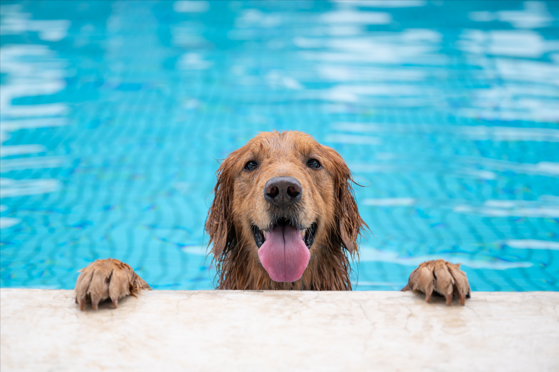It’s easy to assume that all cats hate water and all dogs love it, but that isn’t always the case. Depending on the breed and the individual temperament, a dog may or may not enjoy being in water. It's best to air on the side of caution if you don’t know how your dog will respond to water, especially if your dog is a young puppy or new to you. However, even if your dog absolutely loves the water and is an expert swimmer, there are certain safety measures to keep in mind depending on the type of water your dog is in.
General Water Safety for Dogs
We’ve all heard of “swimmer’s ear”, and have probably experienced it at some point, too! Your dog can also get an ear infection from getting water in their ears, so it’s important to always clean their ears out after they are done swimming. There’s also a condition known as “swimmer’s tail,” and this is when your dog’s tail becomes fatigued from swimming too long or in too cold of water, and their tail droops down and is oftentimes painful for them. It is more common in larger dog breeds and if diagnosed by a vet, will require lots of R&R for your pup to recover (and sometimes an anti-inflammatory drug). Hypothermia in adults is just as prevalent in dogs, so if water is too cold for you to swim in, it’s too cold for your dog, too. You should also beware of extended exposure to the sun and keep in mind different kinds of sunburn protection you can apply to your dog to protect them from the sun’s harmful ultraviolet (UV) rays.
Pool Safety for Dogs
In terms of pool safety for dogs, it will sound very similar to pool safety for children. It’s always best to ensure your dog is supervised while they are swimming in the pool. Investing in a fenced gate or sturdy pool cover is a good idea for keeping your dog out of the pool when they are outside alone. You can help your dog acclimate to the deeper ends of the pool by gradually throwing a toy farther and farther down the pool for them to fetch and bring back to you. Your pool should have easily accessible ways for your dog to exit the pool when they desire. And lastly, make sure they have a bowl of fresh water to drink nearby so it discourages them from drinking the chlorinated pool water.
Lake and River Safety for Dogs
A lake day can be a fun adventure not just for humans but dogs, too! Whether you are taking your pup out on the boat with you or hanging by the shore, it would be beneficial to invest in a doggy life jacket for them, regardless of their swim comfort level. Beware of fishing hooks that could potentially hook onto your dog, and also discourage your dog from drinking the lake water by bringing a bowl of fresh water for them. The lake water can contain algae and other things toxic to them. Look for signs of fatigue in your dog, like painting or going slower than usual, so they don’t overexert themselves. In general, keep this rule in mind: if you don’t feel comfortable with swimming in a certain part of the lake, don’t let your dog swim there, either.
Beach Safety for Dogs
One of the best parts of summer is having a beach day, and we don’t fault you for wanting to bring your furry friend along so they don’t miss out on all the fun. The beach does, however, have higher levels of safety risks for our dogs, so it’s important to keep an eye on them at all times. Saltwater can be toxic for dogs when ingested in large amounts, so be sure to have a bowl of fresh water for them to drink from while you are there. Strong currents and riptides are dangerous for both pets and people, so be sure to discourage your dog from swimming too far out from the shore. Bringing a doggy life jacket is a good idea here too, especially for breeds with shorter legs, and there are also different protective clothes you can put on your dog to protect them from the sun and also prevent their fur from getting sand and ocean water on them. Lastly, don’t let your dog eat anything crazy! Dead fish and other sea creatures could be deadly if eaten, so bring along safe snacks for them to eat so they are less tempted to attempt eating other things not good for them.
We hope these water safety tips are helpful for you and your dog, and wish you many happy water adventures together! For more pet care tips, read more on our blog, Facebook or Instagram.


